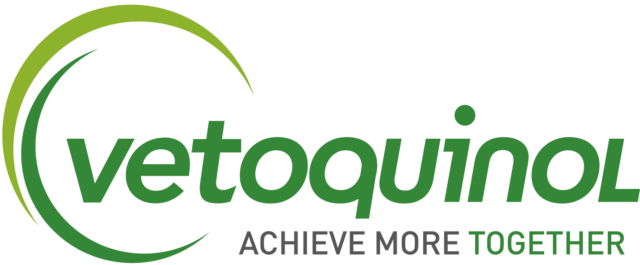Dr. Tom Wheal, co-owner of Oxford Bovine Veterinary Service, Beachville, Ontario, identified the pros and cons of adopting this technology on the farm during a seminar at the Canadian Dairy XPO on April 6 in Stratford, Ontario.
As a practicing veterinarian for 39 years, Wheal has taught his clients a variety of procedures they could do themselves. “I can’t help but think this cycle is turning again with ultrasound,” Wheal said.
“In the hands of a trained farmer, this has become a useful tool to bring more information to your present system,” he continued.
Ultrasound provides a way to see inside the cow without physically handling the uterus. It can also yield results earlier than a physical pregnancy exam.
“We are getting to the point we can rely on the diagnosed pregnancy as low as 26 days, particularly on heifers,” Wheal said.
After training farmers and other individuals in Canada and abroad, he said the stumbling block isn’t necessarily whether this technology can be used but, instead, how it will be applied.
“Learning to ultrasound is going to be useless unless you are going to change your reproductive program. This is really about checking your cows more often because you can,” he said.
Having ultrasound equipment on the farm provides the convenience of checking cows on your own schedule or between veterinary checks. It also allows for rechecks to occur at any time instead of waiting seven, 14 or 28 days for the veterinarian to visit.
“Monthly herd health checks are a problem because you’ll be checking cows bred over 45 days, and those cows really need to be checked in the 32-day range to find the open cows,” Wheal said.
For a number of reasons, veterinarians cannot always provide this service more than once a month.
“I’ve got some clients in under-serviced areas, and I can’t show up more often,” he said. Then there’s the fact they can’t get to every client on Monday. “And everyone would like to be seen on Monday between 6 a.m. and 9 a.m. We don’t have enough vets in the world to service that.”
By becoming trained in the use of ultrasound, producers can perform scans more than once a month.
“If you go from monthly to bi-weekly, you gain 14 days on your program,” Wheal said. “Fourteen days earlier you will be identifying open cows. So you are reducing your days open, and that can impact preg rate.”
Pregnancy or preg rate is the conception rate multiplied by the service rate. The current industry average is a pregnancy rate of 14 percent.
“If you’re at 14, you probably don’t have enough replacements, and you’ve probably got too many stale cows around,” he said.
Ideally, he would like to see his clients around 22 to 25 percent.
Increasing the rate of herd checks can have quite an impact on pregnancy rate. According to Wheal, changing from monthly to every other week can move a pregnancy rate up eight points on average. From every other week to weekly could move it three to four points. There is an economic advantage to every point increase in pregnancy rate.
In an example he provided for a 100-cow herd at a preg rate of 15 percent checking cows twice a month, by increasing to herd checks once a week it could gain a 5 percent increase in pregnancy rate.
Figuring $50 per cow per point, which is not a guaranteed number, that’s an increase of $25,000 for the farm. For those who might question the validity of that number, he said, even half of that per 100 cows is still a lot of money.
However, the higher the current preg rate, the less of an increase the farm could experience. In another example of a 100-cow farm at an 18 percent preg rate moving from every other week to weekly, he estimated a $20-per-cow increase per percentage point. In increasing to 21 percent, that’s only $6,000. Yet, if the herd was comprised of 300 cows, it would be $18,000.
“From a monetary standpoint, if you do your pregnancy checks more often, there is an economic gain to be had by finding open cows earlier. That’s the basis of increasing your pregnancy checks,” Wheal said.
That does depend on your current preg rates. He continued, “If you are down around 12 or 13 or 14 [percent], you need to think very hard about increasing the rate of your pregnancy checks. If you are at 25 or 26, I’m not having this discussion about profitability; there is none.”
That doesn’t mean a producer with a high pregnancy rate can’t learn how to ultrasound; it’s just a different discussion about what it might mean for the farm.
“We have clients who are technical people. They say, ‘I can do that’ or ‘I’d like to do that,’ and I’m all for those clients learning this technology,” Wheal said.
By encouraging interested producers to consider the use of ultrasound on their own, he is not suggesting producers cut their veterinarians out of their program.
“I believe this will enhance your relationship with your veterinarian in a positive way,” he said.
In fact, the first step he recommended was to talk with your veterinarian. Either work with them to learn how to use the technology or enroll in one- or two-day courses meant to teach producers how to ultrasound.
Once you physically master placing the probe inside the cow, which can be fairly easy, especially for someone who is used to breeding cows, learning to interpret the images can be difficult.
“It is very, very daunting the first time you see ultrasound images,” he said. “However, it is easy to train because it’s visual.”
The most important step is applying the knowledge gained from the ultrasound. Wheal said, “Sometimes we are so busy ultrasounding that we forget why we are doing it. We forget to apply the results.”
Of course, there are some roadblocks to adopting this technology.
“This is a commitment,” he said. “It takes training, and you can’t get discouraged.”
He has clients who purchased these units but never used them because they were not committed to it.
Another roadblock is not sticking to a consistent schedule. If you are willing to skip a herd check to cut alfalfa, this may not be for you. “If you’re not prepared to stay on schedule, and a very strict schedule, it’s not going to work,” he said.
Labour shortages can affect whether or not this can be useful. For some farms, it may be better to continue to pay the veterinarian for this service instead of agreeing to take on another task.
Wheal advised anyone considering this to take a look at where they are today and determine if there is room for improvement.
“In reality, if you’re at 23, 24 or 25 [percent], you’re probably where you need to be and the economics of adopting ultrasound would be pretty slim,” he said.
The economics may work out better on larger farms, but small farms can sometimes benefit more because they typically get the least number of visits from veterinarians.
As more dairy producers adopt this technology, it can free up veterinarians to focus on other areas and advance the relationship with their clients.
“We’re slowly looking for ways to pass off this very technical activity we’ve been busy with for the last 10 years and moving on to other very important things on farms we should be concentrating on,” Wheal said. ![]()
Dr. Tom Wheal presented this information on behalf of FarmTech Solutions. For more information on ultrasound equipment and training, visit their website or call (800) 672-9182.

-
Karen Lee
- Editor
- Progressive Dairyman
- Email Karen Lee









